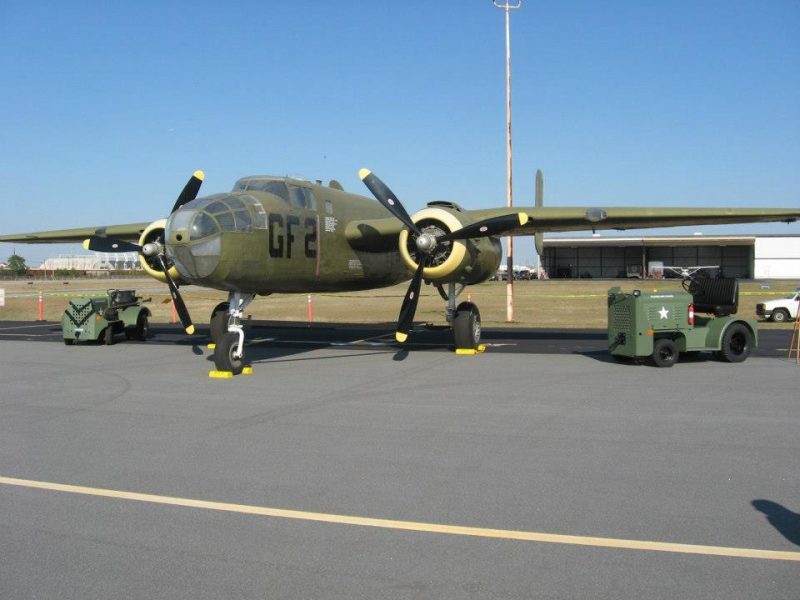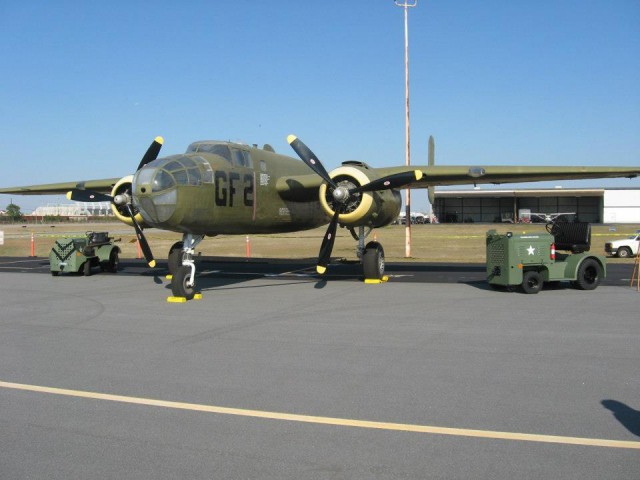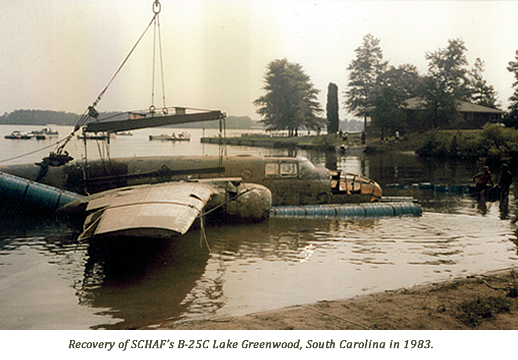During a training run on June 6th, 1944, the crew in a Navy/Marine PBJ-1J bomber dipped low to the water over Lake Greenwood, South Carolina and crashed into the lake.
In 1983, the plane was finally raised from the lake. It was restored and was used at a few reunions for the World War II Doolittle Raiders. However, after being in the hands of several owners, it started deteriorating. The plane, now only one the few that are still in existence, is being restored once again. The new owners who are restoring it plan on giving the plane a permanent home.
The plane once called Skunkie, is going to be put in the Hanger Y1 at Jim Hamilton-L.B. Owens Airport. A group of volunteers who have been granted $20,000 from the Richland County Conservation Commission, along with donations from supporters, are using the money for restorations. Currently, they are in the second round of restoration and promise that the plane will be made to look museum-worthy.
The president of the South Carolina Historic Aviation Foundation, Ken Berry, says that he and his team wants the PBJ to eventually resemble the planes that are on the flight line at the old Columbia Air Base. He said it deserves to look like those because the plane actually sat at that base at one time.
The plane and restoration work are being done in a hangar near Owens Field terminal. The hangar is packed with the plane and other military artifacts that were used in the war. The volunteers hope that one day they can open up a museum in the downtown general-aviation airport. They just need a larger area for the planes and artifacts before they can make a successful museum.
The PBJ that’s being restored had been widely used during World War II mainly for bombing and strafing soldier strongholds from Europe to the Pacific. One of the most famous missions this type of plane was used for was when Colonel Jimmy Doolittle led a raid on Tokyo. There were 16 of the planes that ended up bombing Japan shortly after the attack on Pearl Harbor. While it appeared to be a brave mission for Doolittle, it was more like a suicide mission. The PBJ proved to be quite deadly; there were 268 men who died in training accidents involving this type of plane.
The Aviation Foundation was hoping to restore the plane to flyable condition, but it’s in too fragile to risk flying it. Another thing that stopped the team from restoring it to its flying condition is the fact it would have needed new parts, making the shell of the plane practically new and taking away from the historical value of it. Plus, it would have cost over one million dollars.
Thanks go to Don McElveen in Columbia for donating the funds to make the plane project happen. He was the founding partner of the CMK Engineering firm. John Rainey, who works in Camden as an attorney and political activist, donated money as a way to honor the Raiders. McElveen and Rainey later claimed the plane as South Columbian property for it to be displayed at the South Carolina State Museum. However, that did not pan out, so the aircraft is still on display at the airport hangar.
In the first restored version, the names of the Doolittle Raid were written under the plane’s cockpit. The PBJ was used several times as a centerpiece for reunions of the Raiders. The 50th anniversary was held in Columbia in 1992. When it was first restored in 1992, it cost about $30,000. The finished model now serves as a tour place for school groups and weddings. The team is hoping to teach the school groups the history of the plane and aviation in the state.
Image source: South Carolina Historic Aviation Foundation / Facebook page


